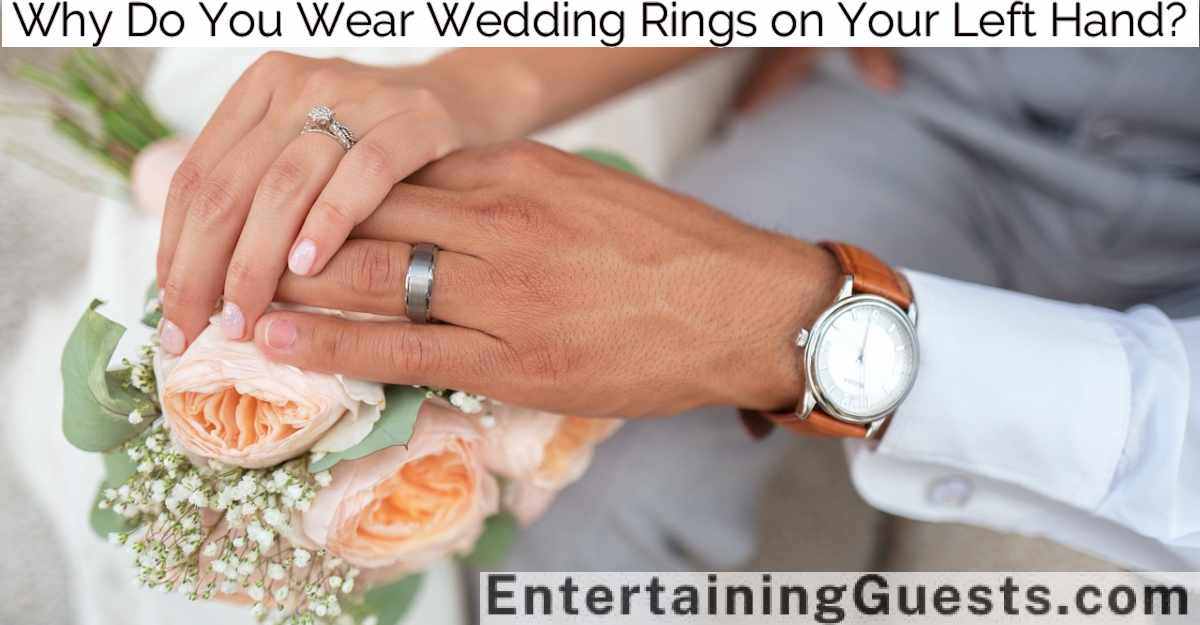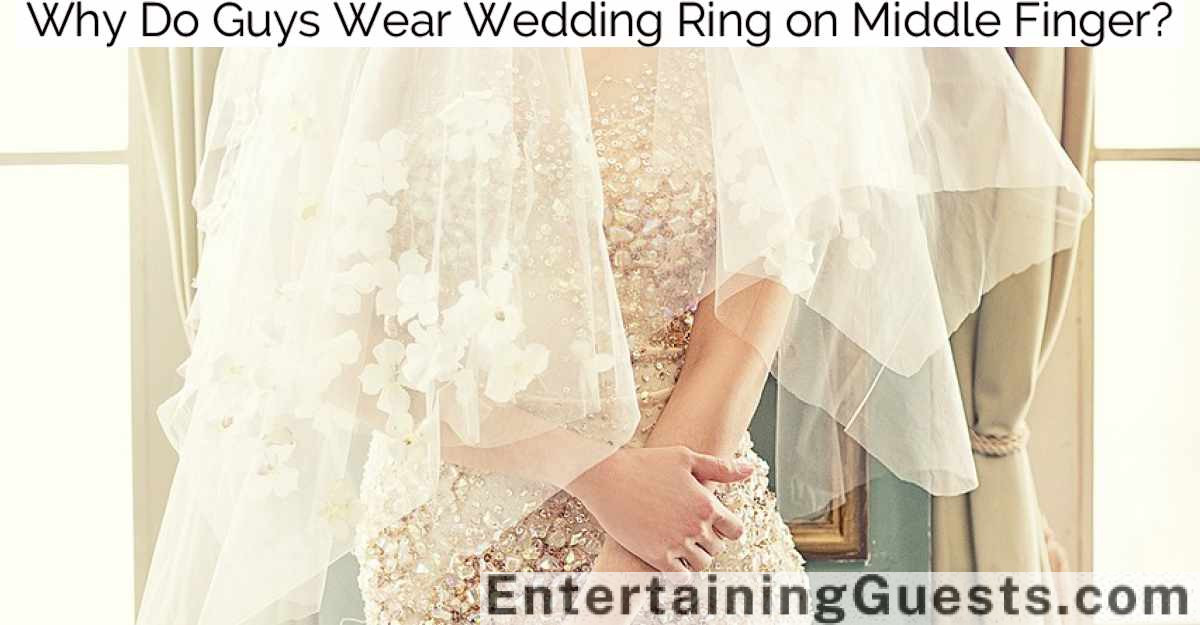You typically wear your wedding ring on your left hand because ancient Egyptians believed this finger housed the ‘vena amoris,’ a vein that leads directly to the heart. This romantic notion, though anatomically inaccurate, was adopted and perpetuated by the Greeks and Romans, intertwining notions of love and marital commitment. Varying cultural beliefs in countries like India and Eastern European regions might dictate different practices, often reflecting religious significance and regional customs. Consequently, the placement of wedding rings on the left hand is a confluence of myths, emotional significance, and evolving cultural rites. Exploring further, you’ll uncover how modern interpretations continue to shift these practices.
Key Takeaways
- The tradition stems from ancient Egypt, where it was believed the left hand’s ring finger contained a vein leading directly to the heart.
- Adopted by Greeks and Romans, the custom symbolized love, fidelity, and marital ownership, maintaining the left-hand placement.
- Despite anatomical studies debunking the ‘Vena Amoris’ myth, the idea that a vein connects this finger to the heart endures due to its romantic appeal.
- Cultural variations exist, with some Eastern European and Orthodox Christian practices favoring the right hand, emphasizing righteousness and virtue.
- Modern interpretations allow for diverse materials and customizations, but the placement on the left hand continues largely due to historical and emotional significance.
Historical Origins of the Tradition
Tracing back to ancient Egypt, the tradition of wearing wedding rings on the left hand originated from the belief that a vein in this finger led directly to the heart. This practice was deeply rooted in the symbolism of love and fidelity. The Egyptians, renowned for their rich cultural mythologies and spiritual beliefs, considered this specific vein to be a direct conduit of love. Consequently, the placement of a ring on this finger was thought to strengthen the connection and commitment between spouses.
As this tradition passed through generations and across continents, the Greeks and Romans adopted this custom, intertwining it with their own marital practices. You’ll find that the Romans, in particular, also infused their understanding of law and ownership into the wearing of the ring, seeing it as a sign of the husband’s lasting bond and claim to his wife.
Over centuries, this custom was embraced by numerous cultures, each adding their own nuances and interpretations while maintaining the ring’s placement on the left hand. This historical journey showcases how a simple act of placing a ring on a finger transcended time and geography, evolving into a globally recognized symbol of marriage.
The Vena Amoris Myth
Despite its romantic appeal, the ‘Vena Amoris’ myth—that a vein from the left ring finger connects directly to the heart—lacks scientific support. This enthralling idea has been widely embraced and propagated, particularly in Western cultures, where it has greatly influenced the tradition of wearing wedding rings on the left hand. However, anatomical studies have clearly shown that all fingers have a similar vein structure and connect to the heart through a network of larger veins, debunking the notion of a special direct link through the ‘Vena Amoris’.
| Property | Description |
|---|---|
| Origin | Ancient Egypt |
| Meaning | ‘Vein of Love’ |
| Cultural Spread | Widely adopted in Roman times |
| Scientific Evaluation | No unique vein to the heart from the left ring finger |
You’ll find that modern anatomy confirms that the circulatory system is uniformly distributed across all extremities, without any preference or unique pathway from a particular finger to the heart. Nonetheless, the myth continues to thrive because it adds a layer of charm and symbolic depth to the practice of wearing wedding rings. This blend of historical lore with emotional significance illustrates how myths can persist even in the face of scientific contradiction, shaping customs and behaviors deeply embedded in cultural rituals.
Cultural Variations in Ring Placement
While the Vena Amoris myth has shaped Western wedding ring traditions, other cultures have developed distinct practices regarding ring placement.
In many Eastern European countries, for example, you’ll find wedding rings worn on the right hand. This tradition stems from Orthodox Christian practices, which associate the right hand with righteousness and virtue. It’s a stark contrast to Western symbolism but serves a similar purpose in representing fidelity and marital commitment.
In some Asian cultures, the approach to wedding rings isn’t just about which hand they adorn but also how they’re used. For instance, in India, rather than a ring, you might see a bride wearing intricate patterns of henna on her hands and feet during the wedding ceremony, symbolizing joy, beauty, and offering protection against evil. Rings, when used, are often worn on either hand depending on regional customs, showing how localized traditions influence marital symbols.
These variations underscore a broader theme: while the symbolism of wedding rings is universal, the specifics of their placement are deeply rooted in cultural, historical, and social contexts. Understanding these differences helps you appreciate the rich tapestry of marital traditions around the world.
Influence of Religion and Ritual
Religious beliefs and rituals deeply shape the traditions surrounding wedding rings and their symbolism across various cultures. You might find it fascinating how these practices are not only about personal commitment but also about connecting with a larger, often divine narrative. For instance, in Christianity, the ring serves as a symbol of eternity and the unbreakable bond of marriage, blessed by God. This circle, having no beginning and no end, is a powerful emblem of infinite love and fidelity.
In Hindu culture, the ring exchange ritual, known as ‘Mangal Sutra’, carries profound religious significance. The black beads in the necklace represent the divine protection against evil influences, emphasizing the sanctity and inviolability of the marital bond.
Here’s a look at how different religions view and integrate wedding rings into their rituals:
| Religion | Symbolism & Ritual |
|---|---|
| Christianity | Circle of eternity, blessed in wedding ceremonies |
| Hinduism | ‘Mangal Sutra’ represents eternal protection |
| Judaism | Ring is a symbol of an unbroken contract |
| Islam | Exchanging rings is not central, but often adopted |
| Buddhism | Minimalist, often avoids material symbols |
Each tradition embeds a unique emotional resonance in the wedding ring, making it not just a piece of jewelry but a sacred token of lifelong unity and love.
Modern Interpretations and Practices
In modern times, wedding rings have evolved beyond traditional religious symbolism to reflect personal styles and societal values. You’ll find that the choices you make about your wedding ring can greatly express your identity and personal beliefs. As societal norms shift, so do the trends and interpretations surrounding wedding rings.
Let’s explore some of the modern practices and what they signify:
-
Materials and Design: You’re no longer limited to gold and silver. Materials like titanium, tungsten, and even silicone are popular, catering to lifestyle and aesthetic preferences. Intricate designs, including intertwined patterns and embedded stones, symbolize complexity and uniqueness in relationships.
-
Customization: Many couples now opt for customized rings that include personal elements such as fingerprints or engraved messages. This trend highlights the importance of individuality within the unity of marriage.
-
Ethical Sourcing: With a growing awareness of ethical consumption, you might prioritize rings sourced from conflict-free zones and crafted with eco-friendly practices. This choice reflects a commitment to global responsibility.
-
Wearing Options: The tradition of wearing wedding rings on the left hand persists, but variations exist. Some people choose to wear their rings on different fingers or hands due to cultural reasons or professional requirements, demonstrating adaptability and respect for diverse practices.
These modern interpretations allow you to align your wedding ring with your values, making it a true symbol of your unique bond and societal views.
Frequently Asked Questions
Can Wedding Rings Be Worn on Different Fingers Due to Medical Issues?
Yes, you can wear wedding rings on different fingers if you have medical issues like arthritis or injuries that affect your left hand’s ring finger, ensuring comfort and avoiding further complications.
How Do Same-Sex Couples Decide Which Hand to Wear Their Rings?
You choose which hand to wear your ring based on personal preference or cultural significance. There’s no set rule, so it varies among same-sex couples, reflecting their unique values and traditions.
What Do Wedding Ring Styles Signify About Personal or Cultural Beliefs?
Wedding ring styles reflect personal tastes and cultural values. You might choose a simple band to symbolize modesty or an ornate design to represent wealth and status within your community.
Are There Specific Metals That Should Be Used for Wedding Rings?
You’re not restricted to specific metals for wedding rings, but traditional choices include gold, silver, and platinum due to their durability and symbolism of wealth and everlasting love in many cultures.
Is It Common to Engrave Wedding Rings, and What Typically Gets Inscribed?
Yes, it’s common to engrave wedding rings. Typically, couples inscribe their initials, wedding date, or a personal message. This customization adds sentimental value and makes each ring unique to the relationship.
Conclusion
You might find it intriguing that the tradition of wearing wedding rings on your left hand is steeped in history and mythology.
This custom, influenced by the ancient belief in the vena amoris and shaped by cultural and religious practices, varies considerably across the world.
Today, while many adhere to this tradition, modern interpretations have evolved, reflecting personal beliefs and societal changes.
Understanding these nuances offers a deeper insight into the symbolic nature of wedding rings in our lives.







